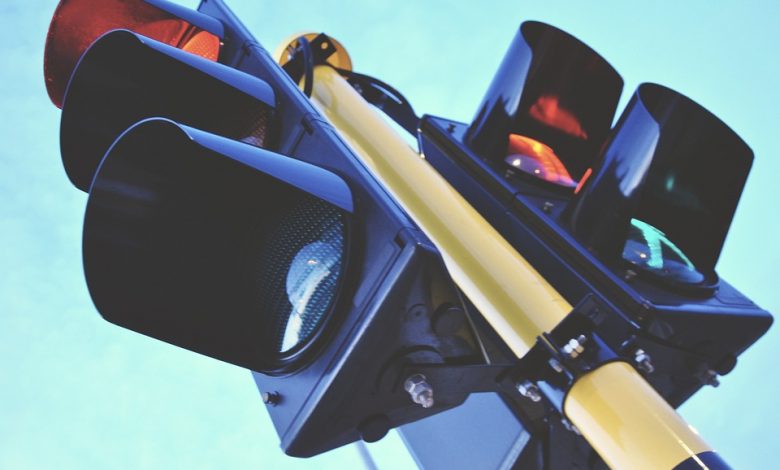

By Joachim Ng
Visit Perak Year 2024 supporter Derrick Vinesh speaks highly of the new KTM Komuter service between Ipoh and Butterworth, as it provides value for money with adult tickets priced at RM12.80 one way and a 50% discount for seniors, children, and the disabled.
The journey takes just two hours despite 11 stops. Derrick, who writes for the Star newspaper, also points out glaring areas of neglect: absence of toilets on board and inadequate facilities at one station for those with luggage.
But for commuters who prefer to have toilets at hand, there is the ETS that comes at RM34 (gold class) and RM43 (platinum class) with 50% discount for seniors, children, and the disabled.
Derrick’s plus-and-minus experience characterises the state of public transportation. The Government wants to push it but doesn’t go all out. For Visit Perak Year 2024, a whopping eight million domestic tourists are being targeted. The State Government not only aims to attract domestic tourists but is also targeting 350,000 foreign tourists.
You may correctly guess that most domestic tourists are from Klang Valley. What is it that they look forward to in Perak, especially the State capital, in addition to the usual food galore and the cave visits? Surprise! They want to escape the almost freeze-frame traffic jams that besiege them daily and choke them with carbon emissions.
The massive financial loss from traffic snarls has been calculated by experts. The World Bank, for instance, estimates that Klang Valley residents spend more than 250 million hours a year stuck in traffic, which translates to as much as RM20-24 billion every year. Divide that by the Klang Valley population of 8.8 million, and each person loses approximately RM2,500 a year.
The financial drain is a combination of fuel wastage (up to RM2.4 billion worth of petrol is used nationwide because of congestion), monetary value of lost time (up to RM19.6 billion), and environmental & safety effects of additional carbon emissions and other pollutants from traffic congestion (up to RM2.7 billion).
Transport Minister Anthony Loke told Parliament that as of October 2023 there were 23.8 million still-in-use motor vehicles with active road taxes, for an estimated nationwide population of 33.7 million last year. Cars made up 47% of the total, closely followed by motorcycles at 46%. Public transport vehicles — taxis, buses and rental cars — made up only 0.5%.
According to economics expert Professor Nik Hashim Nik Mustapha, commuting traffic in Klang Valley is worsening every day. The World Bank’s Malaysia Economic Monitor June 2015 – Transforming Urban Transport — points out that only 17% of commuters in Kuala Lumpur use public transport compared with 62% in Singapore.
It is no wonder that Malaysia ranks as the fourth-worst country in Southeast Asia in terms of traffic congestion and holds a record for the second-highest levels of CO2 emission.
Worse than financial loss are premature deaths and the shortening of our lives caused by long hours of daily exposure to particulate matter, nitrogen oxides, sulphur dioxide, carbon monoxide, and carbon dioxide from idling vehicles and engine revving.
Lung diseases, high blood pressure, cardiovascular problems, stroke, asthma, and increased risk of Type 2 diabetes are among the lasting health effects associated with traffic-induced air pollution.
As reported by Pakistan Observer, 128,000 people die annually in Pakistan due to air pollution-related ailments. The Hindu has reported that air pollution causes over 2 million deaths annually in India.
Is the Klang Valley scenario a precursor of Ipoh’s future? The traffic ailment has long spread to Penang and has infected Johor Baru as well. It’s only a matter of time before it comes to Ipoh, unless we start taking preventive measures now.
Car ownership will keep growing as the Population and Housing Census of Malaysia 2020 shows that Mukim Hulu Kinta, which is under the administration of the Ipoh City Hall, is one of the top ten sub-districts in Peninsular Malaysia for population increases partially due to emigration from Klang Valley. From 2010 to 2020, Mukim Hulu Kinta registered a 99,109 jump in population.
What is driving the traffic problem? It’s not car ownership as is commonly assumed. Rather it is the overuse. In Australia, city dwellers use their cars for just half their number of journeys and for the other half they take the bus. In Singapore you only need to use your car for a leisurely drive on your off-days, as on workdays you can easily hop onto a bus that will drop you off near your office.
But what’s the experience of Malaysian city dwellers? Ronald Benjamin of the Association for Welfare, Community and Dialogue observed in a letter published in the Star six months ago: “For instance, living in Ipoh, I observe how public transport such as buses move along key main roads while skipping the interiors of housing areas.
“Currently, one has to walk a distance to the main roads from these areas to catch a bus. And yet, housing estates are where many university and college students who need quick access to cheap transport live. And I know that senior citizens in such areas would prefer to use efficient and affordable public transport to go for their hospital checkups.”
In an efficient public transport system such as Japan and Singapore have, buses ply every residential neighbourhood and stop at all commercial centres, markets, and schools. In Japan, even if a road has just one regular daily passenger, a bus will go to pick up that guy.
However, such appeals for efficient bus transportation go unheeded in Malaysia, as the system is profit-oriented and not deemed to be a public service. Hence, a road becomes part of a route only if it is densely populated and there is significant ridership prospect.
There is a way to bypass the profit versus service impasse. Consider implementing three affordable measures that we recommend here:
One: Cut operational cost by deploying small 20-seater buses for off-peak runs and use the existing large buses only for peak-hour runs. This will allow better coverage with more routes and smaller intervals between bus stops so that a walk from your home to the nearest stand should take no more than 5 minutes. The fuel and maintenance savings will be substantial, especially if all new buses are electric vehicles.
Two: Increase bus frequency so that commuters wait no longer than 5 minutes during peak hours and no longer than 10 minutes during off-peak hours. If the service is customer-oriented, it will get very popular and high ridership is good compensation.
Three: Get industry contributions to finance the purchase of 20-seater electric buses. Compel automobile manufacturers, assemblers, and distributors to donate RM300 for every new car sold in Perak. If 20,000 new cars are sold every year, RM6 million will be collected for this EV bus fund. Industry firms can market this fund as a green CSR project. Ensure that the contribution isn’t passed on to purchasers.
With RM6 million, 30 small electric buses can be purchased every year. It’s a fast start if we begin now. Enhancing bus popularity should have no effect on car sales, as the aim is to encourage car owners to drive half the week and take the bus the other half.
Ipoh City Council should pursue the big goal of encouraging residents to leave their cars at home half the week. Many will heed such a call if there is an immediate strategy to ensure timely “first mile and final destination” connectivity.
The absence of first-and-last-mile timely connectivity is the bane of public transportation in Klang Valley, and Ipoh City Council must learn from this abject failure never to duplicate it. Just last month, a Penangite visiting Kuala Lumpur complained about having to wait 30 minutes for a bus at an MRT station. When the bus arrived, the driver stopped some distance from where commuters were waiting and then he drove off without picking them up.
Among the main ingredients for successful public transportation is to have a bus stop just 100 metres from every doorstep and 100 metres from your destination, a waiting time of no more than 10 minutes, affordable ticket pricing, and strict driver discipline.
Visit Perak Year 2024 also features a groundbreaking concept — “Rehabilitation and Conservation Tourism.” The crux of this innovative tourism package lies in its two-fold approach – ecological conservation and rehabilitation. Go all the way and not halfway. When tourists catch the frequent sight of electric buses, they will know that we are genuine.
Profit-oriented bus operators should grab every 20-seater EV in stock as the maintenance cost is almost zero, with the only key component that requires attention being the battery which should last five years easily. The EV bus fund can also be used to purchase replacement batteries.
Are we still waiting for the red lights to turn green? Who’s operating the lights at this traffic junction?
=======================================
Disclaimer: The views and opinions expressed in this article are those of the author and do not necessarily reflect the official policy or position of Ipoh Echo


